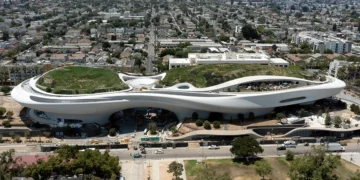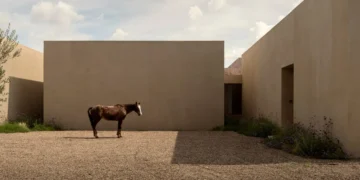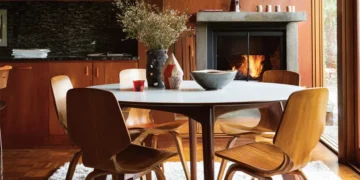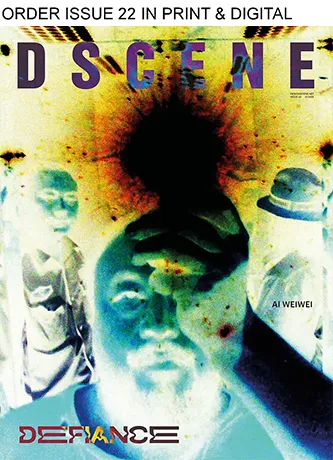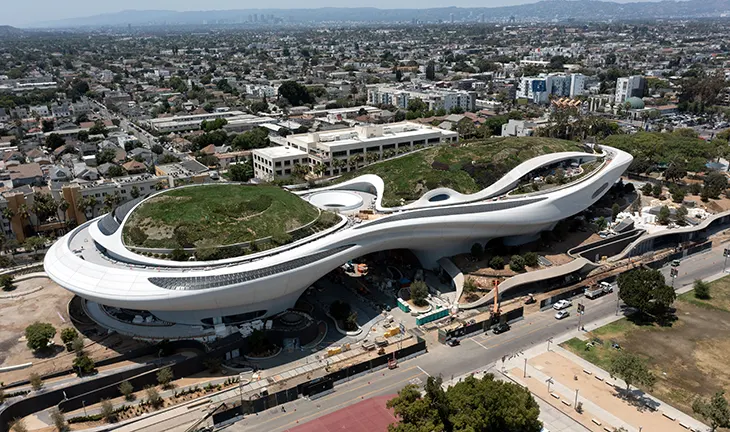
The Lucas Museum of Narrative Art is taking shape in Los Angeles, where MAD’s vision for a new cultural landmark is moving toward completion. Originally planned for Chicago, the museum shifted to California in 2015 after disagreements over the proposed site. Los Angeles and San Francisco were evaluated as possible new homes, with MAD developing distinct concepts for both cities.
ARCHITECTURE
Exposition Park ultimately served as the most compelling location, surrounded by large, diverse communities and positioned within reach of more than 500 schools. The decision aligned the museum with an audience that reflects its mission: to broaden access to narrative art in all its forms.

MAD’s design for the museum introduces a flowing, sculptural presence to Exposition Park. Led by Ma Yansong with partners Dang Qun and Yosuke Hayano, the architecture follows the studio’s ongoing exploration of form, landscape, and human experience. Their approach avoids rigid geometry in favor of shapes that feel soft, open, and responsive to environment. The museum’s rising structure is defined by sweeping curves, a lifted profile, and a roofline that stretches the length of a mid-sized aircraft carrier. Its elevated volume creates shaded public space below, giving the campus an accessible, open-air character.
The scale of the project is matched by its engineering demands. Excavation for the underground components produced enough earth to fill 115 Olympic swimming pools. More than 11,000 concrete trucks have delivered the 118,000 cubic yards of concrete needed for the structure, while over 5,500 tons of rebar reinforce the foundation. The façade consists of 1,500 fiberglass-reinforced polymer panels, a lightweight material chosen for its strength and ability to follow the museum’s continuous curves. Inside, a fourth-floor gallery spans 82,000 square feet, a single exhibition level measuring one and a half football fields.
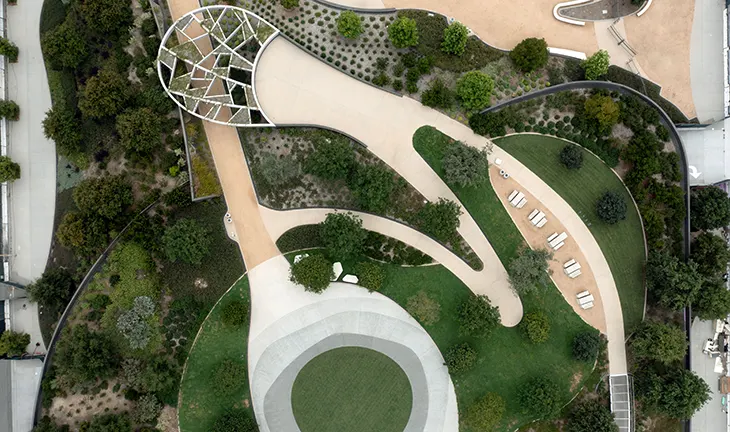
As the Lucas Museum continues to rise above Exposition Park, it signals a new cultural moment for Los Angeles, shaped by ambitious design, technical complexity, and a mission rooted in public engagement.
For a full review, see more on ARCHISCENE.
